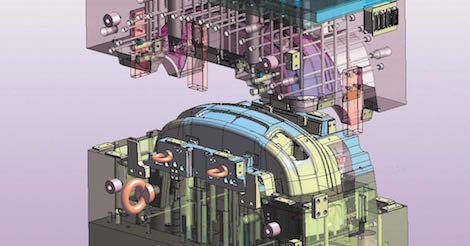
We’re all used to 3D Systems acquiring an increasingly diverse set of companies to expand out its portfolio of solutions and offerings, but this one came as a surprise.
News is just in that the 3D print giant has acquired Israel-based Cimatron for around the $97 million dollar mark.
In a press release issued this morning, the two companies have entered into a definitive agreement that will see the Cimatron branded products (such as its mould design and CNC programming tools) as well as the GibbsCAM product line, brought under the 3D Systems umbrella.
While 3D Systems’ acquisitions in the software space have often centred on the design and creation (including reverse engineering and inspection) end of the spectrum, this is the first time that the company has shown any intentions towards the CNC market.
In a letter to its resellers, sent out this morning, the Cimatron management team stated “Cimatron Group, with its CimatronE and GibbsCAM product lines, will enable 3D Systems to extend their offering and better serve the traditional manufacturing sector.
3D Systems were impressed with our products, management, employees, engineering capabilities, customer support, direct sales and reseller network, and find our extended teams around the world to be of great value to their expanding organisation.
“We believe that the backing of a large corporation will positively contribute to growing our existing business, as well as give us a great opportunity to invest in diversifying into new exciting areas of digital manufacturing.
“Our top priority will be to continue and support the business and success of our existing customers by providing them with ever better CimatronE and GibbsCAM product”
Cimatron has perhaps been quiet in the last few years, as the CAM market is beginning to consolidate (something that’s long overdue).
Perhaps the biggest news was one of its executive referencing 3D printing as an area of interest last year, which then saw a spike in its stock price as a result.
Subsequently, the company set up a 3D printing advisory board, to see that through.
Why would 3D systems get into the CAM game? The answer is pretty simple.
When you boil down a lot of the potential of 3D printing in the industrial space, it makes most sense when used alongside more traditional forms of manufacturing – tooling or machining based.
Metals printing in particular, complements tooling design.
If you can grow your mould inserts, rather than machining, then you have the potential to do some very interesting things – whether that’s conformal cooling inside tooling, growing inserts for tooling (where the bulk of the tool is machined as per normal) or even spark tools.
There’s also the issue that while you can produce final end use parts with metal printing, it’s often the case that these things need finishing, post processing and that takes some CAM knowledge and a traditional CNC-based process.






